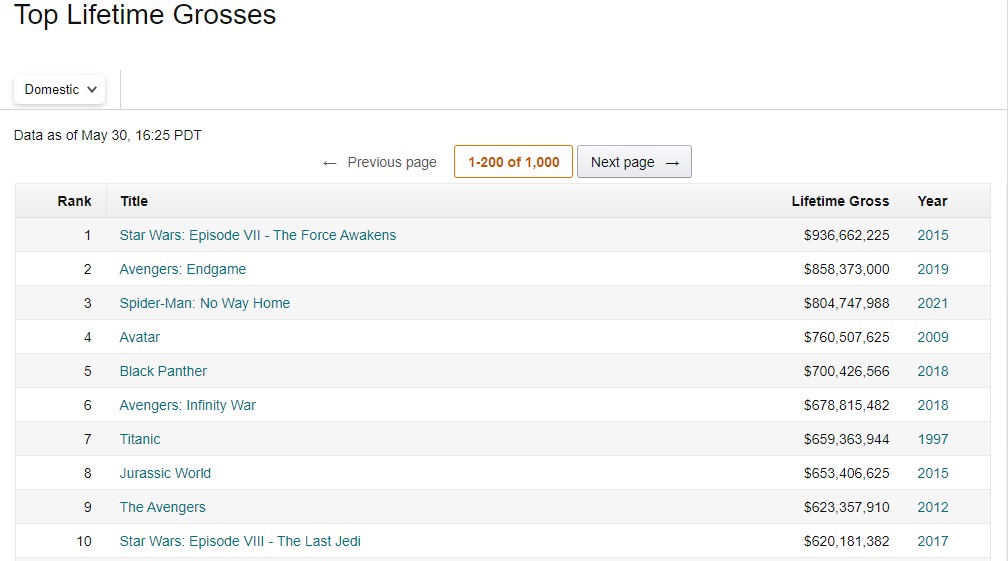7 Main Differences Between Movie And Film (With Table)
While we tend to use both words in a conversation, the delimitation between them is often blurred in your mind. In this article, I will give you the 7 main differences between movies and film so that you’ll know for sure when to use each term.
As a general rule, films tends to have a slower pace, with the goal to make people think on serious topics, while movies are mainly made for entertainment, with a faster pace and usually a bigger budget. Some projects may mix elements from both categories to appeal to a wider audience.
Keep reading to find out all the details, and check the comparison table at the end for a quick overview.
Approach to Storytelling
The terms film and movie are usually used to refer to different types of experiences in the cinema.
Generally, a film has a slower pace. Generally, they will have a more serious tone and take a more artistic tone. Here are some examples of things that could be considered films:
- Nomadland
- The Father
- A Beautiful Mind
- The Power of the Dog
On the other hand, movies generally have a faster pace. They aim to create a light-hearted and fun viewing experience for the audience. If you can enjoy it with popcorn, it’s most likely a movie.
Furthermore, many popular movies will spawn sequels or start franchises. This is rare for films. Some examples of popular movies include:
- Marvel Movies
- Legally Blonde
- Jurassic Park
- Shrek
- Harry Potter
It should be noted that there is no definitive way of deciding whether a project is a film or a movie. Sometimes, there will be elements of both, and it will be up to the individual to decide which camp it belongs in.
Genre
Some genres tend to be more closely associated with movies. These are:
- Action
- Comedy
- Adventure
- Horror
On the other hand, some of the genres that are most closely aligned with film include:
- Historical
- Documentary
- Arthouse
- Biographical
Of course, there will be outliers in each genre. For example, American Made is a historical film that is based on true events. However, it uses action and comedy to make sure that it will appeal to a wide audience, which makes it classed as a movie.
Purpose
The difference in the tone and pace of movies and films stem from the audience that they have been made for.
Generally, films are made to change someone’s mind or explore the views around a topic. For example, documentaries are often made to educate the audience about a topic. They can also be used by directors to showcase their art.
While a film is designed to get the audience to think, movies have a simpler aim. They want people to have fun. These are usually built to appeal to a broad base of people. Ideally, they will be aiming to have commercial success.
Size of Audience
Ultimately, all films and movies are aiming to make money. Hollywood is a business at the end of the day. So, how large is the audience for each of these approaches to storytelling?
Movies have the upper hand in this area. They are designed to be commercially successful. The general public will want to see the latest blockbuster at the cinema. This is reflected in box office results. Here is a snapshot of the highest lifetime grosses, according to Box Office Mojo:
- Star Wars: The Force Awakens
- Avengers Endgame
- Spiderman: No Way Home
- Avatar
- Black Panther
You’ll likely have noticed that this list is dominated by movies. Films, on the other hand, attract a more niche audience. Because of this, they tend to have a more subdued box office, compared with their blockbuster counterparts.

Some films may opt to skip the costs and difficulties of opening in a cinema altogether. Instead, they might play at smaller film festivals for a more niche audience. This approach is rare for movies. They aim to make money. So movies need to reach the cinema, to conquer the box office.
As we’ll discuss later, films tend to do fairly well at awards shows. Because of this, when Oscar season rolls around, some people might be more inclined to check out films. However, this isn’t always the case. For example, despite Hurt Locker impressing critics and winning best picture, it still struggled at the box office. It managed a domestic gross of just $17 million.
Movies also tend to build large fanbases, entering the cultural conversation. For example, most of us would be able to hum the theme tune of Mission Impossible or James Bond. There are dozens of figurines of characters from the Marvel Cinematic Universe. While films can get appreciation from the audience, they are unlikely to have this type of commercial success.
Award Recognition

While films might struggle at the box office, they do tend to do fairly well at awards shows. For example, let’s look at some previous winners of the most prestigious award in Hollywood, the Oscar for Best Picture:
- Nomadland
- CODA
- Green Book
- Moonlight
While some movies might get nominated for Best Picture, like Mad Max Fury Road, it’s rare for them to win the top award.
It’s important to note that whether a project is a film or movie doesn’t have any impact on the quality of the final product. Cinema is subjective. Just because critics rave about a film doesn’t mean that audiences will enjoy it. Similarly, just because movies are made for a broader audience that doesn’t mean that they are all low-quality.
Budget
Deciding how much funding a project should get is a tricky task. Lots of things will be taken into account. For example, a script that calls for a lot of special effects will necessitate a higher budget. However, it’s also important to consider the size of the potential audience. Studios don’t want to spend millions, only to find out that no one is interested in the film.
Because of their broader appeal and ability to be commercialized, it’s common for movies to receive a higher budget than films. Plus, they will often need to organize expense set pieces, like car chases or fight scenes.
On the other hand, a film can be shot on a more limited budget. Sometimes, they will simply consist of a handful of locations with a limited cast.
Who Uses the Term
There is a slight difference between the groups that use these terms. Generally, a film is used by those within the industry, who are involved with its creation. This stretches back to the early days of Hollywood.
Originally, directors had to shoot onto a roll of film. This captured the movement of the performers. The film was then developed and sent to projectors across the country to be played. Plus, many journalists and industry professionals think that the term “film” sounds more professional than “movie”. This is why it might appear more often on websites and magazines that focus on the entertainment industry.
On the other hand, you will often find that the wider public will use the term movie, rather than film. This stretches back to the days when the cinema used to be known as the moving picture show.
The way these words are used will depend on the area they are being used. For example, in the United Kingdom, it’s more common for the public to use the term film. In America, it’s most common to use the word film.
Comparison Table
Here is a quick overview of some of the most significant differences between films and movies.
| Film | Movie | |
| Approach to Storytelling | Slower paced. Often tend to be more thoughtful. | Faster pace with a greater focus on audience appeal. |
| Genre | Most commonly associated with historical, biographical, and documentary | Most common in action, comedy, and adventure. |
| Purpose | To inform and educate. Sometimes used as a way for a director to tell more artistic stories. | To entertain. A movie aims to reach the largest possible audience. |
| Size of the Audience | Tends to be more niche | Aims to appeal to the general public. Does well at the box office |
| Award Recognition | Commonly given Oscars | Often overlooked for major awards |
| Budget | More limited | Tend to have a fairly large budget |
| Who uses the term | Used by those within Hollywood and media that is focused on the entertainment industry | More commonly used amongst the general public. |






